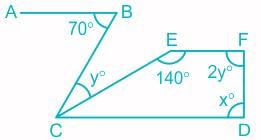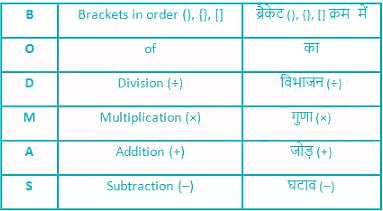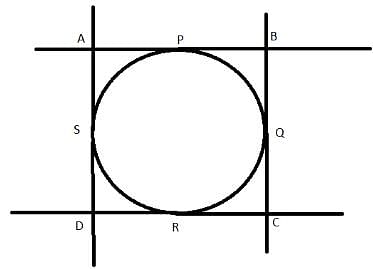REET Level 2 Mock Test - 3 (Science and Mathematics) - REET MCQ
30 Questions MCQ Test REET Level 2 Mock Test Series 2025 - REET Level 2 Mock Test - 3 (Science and Mathematics)
According to Gardner, ability to notice and make distinctions among the moods, temperaments, motivations and intentions of other peoples is termed as:
The understanding typically develops during early infancy that an object still exists even when it disappears from the sight or other senses is known as-
Which of these statements in the context of emotions, learning and motivation is the most appropriate one?
In which teaching type learner is a knowledge seeker, with teacher as facilitator and guide?
In which stage, the child responds to inferred reality?
Which of the following statements is correct in relation to 'concept formation' by a child?
नई शाब्दिक या संरचनात्मक वस्तुओं को सिखाने के लिए संवादों के लिए सहारा के रूप में क्या उपयोग किया जा सकता है?
निर्देश : दिए गए गद्यांश को ध्यानपूर्वक पढिए तथा पूछे गए प्रश्नों के उत्तर के रूप में सबसे उपयुक्त विकल्प का चयन कीजिए।
कछुआ, मगर और शार्क के समान, गंगा की डॉलफिन एक अत्यंत प्राचीन जलचर है। औपचारिक रूप से इसकी खोज सन् 1801 में हुई थी। पहले यह दक्षिण एशिया, विशेष रूप से भारतीय उपमहाद्वीप में बहुत बड़े क्षेत्र में फैली हुई थी तथा बड़ी संख्या में पाई जाती थी। यह भारत, बांग्लादेश तथा नेपाल में कई नदियों में मिलती थी, किंतु वर्तमान समय में केवल गंगा, ब्रह्मपुत्र, मेघना और कर्णफुली में शेष बची। है। कभी-कभी यह चम्बल, घाघरा और सप्तकोशी नदियों में भी देखने को मिल जाती है।
गंगा की डॉलफिन भारत के सात राज्यों की चुनी हुई नदियों में मिलती है। ये राज्य हैं- असम, उत्तर प्रदेश, मध्य प्रदेश, बिहार, राजस्थान, झारखंड और पश्चिम बंगाल। यहाँ इसे गंगा, चंबल, घाघरा, गंडक, सोन, कोसी, ब्रह्मपुत्र आदि नदियों तथा इनकी सहायक नदियों में देखा जा सकता है। केवल ताज़े पानी की नदियों में रहने वाली यह डॉलफिन अकेली अथवा बहुत छोटे-छोटे झुंडों में रहती है। इसके झुंड में सदस्यों की संख्या प्रायः तीन से अधिक नहीं होती। सामान्यतया बच्चेवाली मादा डॉलफिन, अपने बच्चे के साथ विचरण करती हुई दिख जाती है
Q. गद्यांश के अनुसार निम्नलिखित में से कौन-सा कथन सत्य है?
Read the following passage carefully.
Discursive writing refers to a style of writing that presents a balanced argument by considering various points of view. This type of writing allows the writer to explore different perspectives and draw conclusions based on evidence and reasoning. Discursive writing provides an opportunity for the writer to critically analyze a topic and consider different perspectives. This style of writing can also be used to present a convincing argument and persuade the reader to accept a particular viewpoint. Additionally, discursive writing helps the writer to develop analytical skills and improves critical thinking abilities.
However, discursive writing can also have some disadvantages. One of the main challenges is finding credible sources of information to support one's arguments. In addition, it can be difficult to keep the writing objective and neutral, especially when dealing with controversial or sensitive topics. Moreover, discursive writing can become repetitive and monotonous if the writer focuses too much on presenting different perspectives without offering a conclusion. To effectively write a discursive essay, it is important to research the topic thoroughly and gather relevant information from credible sources. The writer should also aim to present a balanced argument by considering both sides of the issue. Additionally, the writer should focus on developing clear and well-structured paragraphs and use transitional words to guide the reader through the argument.
In conclusion, discursive writing is a valuable tool for exploring different perspectives and drawing well-reasoned conclusions. However, it is important to approach the task with care and consideration to ensure that the writing is objective and presents a balanced argument. With the right preparation and strategy, discursive writing can be an enjoyable and effective way to express one's opinions and thoughts on a particular topic.
Q. What is the part of speech of the word "perspectives" as used in the second paragraph of the passage?
Directions: Read the poem given below and answer the question that follows.
T'was the night before Christmas,
And all through the kitchen,
My mother was cooking some delicious chicken.
All of the sudden,
The light bulb broke,
And my mother randomly started to choke.
In a flash, superman came.
My brother thought his costume was lame.
And instead of rescuing the day,
He ate up my dinner,
And he flew away !
Santa burnt the house with dynamites and flares,
I guess I was on the naughty list, next year,
I'll care !
Q. The word 'instant' can replace which of the following words from the poem?
A teacher asks the students to assess their classmates during a debate competition in the class. Here the teacher is focusing on:
Read the passage carefully and answer the questions that follow. Some words may be highlighted. Pay attention.
While the apprehension of losing job security is the most natural human tendency, there are some factors like technology that are beyond an individual's control. The sooner the employees embrace the truth, the easier it would be to convert it into an opportunity. This can be done by upgrading employee-skillset with the following skills for the requirement of future roles:
Leadership: The ability to lead the automation change will be a crucial skill in the organization. The leader will be also responsible for identifying the right talent in the machine age and engaging the workforce through human touch points.
Information Technology: Who can handle technology better than the technologists themselves? However, automation will force employees to hone their understanding of big data, machine learning, cloud computing, augmented reality, and mathematical and analytical skills. With the huge amount of data available, they should be able to apply it to present insight.
Management: The future workplaces will be a collaboration of machines/robots and humans. Hence, the managerial skills required to strike a balance between machines and human emotions, and making them work alongside will also come handy.
Soft Skills: Machines are after all machines. They may do work more quickly and efficiently, but they can't bring in 100 percent human touch and feel. There will be areas where people to people interaction, human relationships, and networking will still matter, hence soft skills such as communication, social and behavioural, cognitive and emotional intelligence would be expected from the employees.
It's about time that employees start reskilling/upgrading their skills and search for relevant programmes/courses in their organizations or outside. For example, IT major Capgemini is planning to train each of its one lakh employees in India in digital skills by 2018. Intel has launched 60 courses as a part of its 'AI Developer Education Programme' to train 15,000 Indian engineers, developers, scientists, and students.
It can't be denied that automation will impact the jobs considerably in India. However, developing people-centric skills and upgrading/reskilling for new roles could help employees tide over the automation wave.
Q. Which of the following statements are true according to the passage?
A. Machines are capable of doing more work than humans, quickly and efficiently. Thus, they will replace significant labour force.
B. There will be no areas where people to people interaction, human relationships, and networking will matter. Sophisticated machines can completely replace humans in these areas and thus there will be loss of all the people-centric jobs.
Task : Fill in the blanks choosing the suitable words.
(i) I want a cup of ______ coffee. (strong/powerful)
(ii) He is a ______ smoker. (heavy/big)
The task above tests the learner's ability in:
Direction: Read the passage given below and then answer the questions given below the passage. Some words may be highlighted for your attention.
The big fuss about consensus management is an issue that boils down to a lot of noise about not much. The consensus advocates are great admirers of the Japanese management style. Consensus is what Japan is famous for. Well, I know the Japanese fairly well: They still remember Douglas MacArthur with respect, and they still bow down to their Emperor. In my dealings with them, I found that they talk a lot about consensus, but there's always one guy behind the scenes who ends up making the tough decisions. It doesn't make sense to me to think that Mr. Toyoda or Mr. Morita of Sony sits around in committee meetings and says, "We've got to get everybody in this organization, from the janitor up, to agree with this move". The Japanese believe in their workers' involvement early on in the decision-making process and in feedback from employees. And they probably listen better than we do. But you can bet that when the chips are down, the yen stops at the top guy's desk. So, we're wasting time trying toDirection: Read the passage given below and then answer the questions given below the passage. Some words may be highlighted for your attention.
The big fuss about consensus management is an issue that boils down to a lot of noise about not much. The consensus advocates are great admirers of the Japanese management style. Consensus is what Japan is famous for. Well, I know the Japanese fairly well: They still remember Douglas MacArthur with respect, and they still bow down to their Emperor. In my dealings with them, I found that they talk a lot about consensus, but there's always one guy behind the scenes who ends up making the tough decisions. It doesn't make sense to me to think that Mr. Toyoda or Mr. Morita of Sony sits around in committee meetings and says, "We've got to get everybody in this organization, from the janitor up, to agree with this move". The Japanese believe in their workers' involvement early on in the decision-making process and in feedback from employees. And they probably listen better than we do. But you can bet that when the chips are down, the yen stops at the top guy's desk. So, we're wasting time trying to emulate something I don't think really exists.
Business structures are microcosms of other structures. There were no corporations in the fifteenth century. But there were families. There were city governments, provinces, and armies. There was the Church. All of them had, for lack of a better word, a pecking order.
Why? Because that's the only way you can steer clear of anarchy. Otherwise, you'll have somebody come in one morning and tell you: "Yesterday I got tired of painting red convertibles, so today I switched to all baby-blues on my own". You'll never get anything done right that way.
What's to admire about consensus management anyway? By its very nature, it's slow. It can never be daring. There can never be real accountability - or flexibility. About the only plus that I've been able to figure out is that consensus management means consistency of direction and objectives. And so much consistency can become faceless, and that's a problem too. In any event, I don't think it can work in this country. The fun of business for entrepreneurs, big or small, lies in the free enterprise system, not in the greatest agreement by the greatest number.
Business structures are microcosms of other structures. There were no corporations in the fifteenth century. But there were families. There were city governments, provinces, and armies. There was the Church. All of them had, for lack of a better word, a pecking order.
Why? Because that's the only way you can steer clear of anarchy. Otherwise, you'll have somebody come in one morning and tell you: "Yesterday I got tired of painting red convertibles, so today I switched to all baby-blues on my own". You'll never get anything done right that way.
What's to admire about consensus management anyway? By its very nature, it's slow. It can never be daring. There can never be real accountability - or flexibility. About the only plus that I've been able to figure out is that consensus management means consistency of direction and objectives. And so much consistency can become faceless, and that's a problem too. In any event, I don't think it can work in this country. The fun of business for entrepreneurs, big or small, lies in the free enterprise system, not in the greatest agreement by the greatest number.
Q. What did the author mean by 'They still remember Douglas MacArthur with respect, and they still bow down to their Emperor'?
How many language skills does an educated person learn?
Ramesh Sinha is 12 Years old. He was born on 10th May 2001. His father Rakesh Sinha is a doctor. They live at No. 10, Kutab Institutional Area, Delhi. Ramesh studies in Adarsh Vidyalaya. He plays cricket and chess. His hobbies include painting and coin collection. Ramesh wants to join the local children’s club.
The Kutab Children’s Club Form:
Name & Age: ______
Date of Birth: ______
Father’s Name & Occupation: ______
Mother’s Name & Occupation: ______
Address: ______
Lalita, an English teacher, provided students with the above-mentioned information and a form and ask them to fill the form after reading the information. This is an:
In the figure, if CD || EF || AB, then find the value of x-

Meaning of the word 'Heurisco' is
Sum of mean and median of the numbers 5.02, 5.18, 5.12, 5.007 and 5.018 is
The value of 8 + (1/2 + 1/4) x 16 is:
Which of the following disease is caused by vitamin D deficiency?
A school has 560 students. If the number of girls is 14(2/7)% of the number of boys, then the number of girls in the school is
If four sides of a quadrilateral ABCD are tangential to a circle, then
A teaching strategy followed by a physical science teacher who is most concerned about a visually challenged learner to teach neutralisation will be
Student draws neat and accurate figures. This specification relates to which of the following objectives?
Coefficient of x in the expression (x2 + 7x + 10) ÷ (x + 2).
Which of the following is an example of a scientific attitude that can be promoted in the classroom?
a) Blind acceptance of scientific ideas.
b) Disregard evidence that contradicts a hypothesis.
c) Open-mindedness and willingness to revise hypotheses based on new evidence
For teaching which mathematical process are Napier pieces used?
In the mathematics period, a debate on the topic 'Zero is the most important number' was conducted in the class. This activity will encourage the student-
From the followings, identify the statement that is not true about science.
























